- Home
- P. T. Deutermann
The Commodore Page 13
The Commodore Read online
Page 13
“Bosun’s Mate.”
“Goddamn coffee coming right up, Cap’n,” the bosun responded. Sluff smiled in the darkness.
FOURTEEN
The following morning the admiral convened an after-action conference aboard the flagship, USS Providence. He’d requested Sluff plus the COs and XOs of both cruisers and the CO of Evans to attend. The four ships had returned to Purvis Bay at 0530 and anchored. The fuel barges had appeared after sunrise GQ to top everyone back off; the Japs had not come down from Rabaul. Torpedo and gun ammo barges were laid on for noon, so the admiral called his meeting for 1030.
Sluff had offered to pick up the CO of Evans in his boat for the trip over to Providence, about a mile distant from where the destroyers had anchored. When they arrived, there was some momentary confusion on the cruiser’s quarterdeck when two three-stripers arrived at the top of the sea ladder. The somewhat flustered OOD asked which one of them was ComDesDiv 212.
“I’m DesDiv Two-Twelve,” Sluff replied. “This is Evans.”
The requisite number of bells was sounded for each of them. A moment later, the exec of Providence popped out of a hatch to escort them up to the wardroom. He, too, was a full commander, and senior to both the captain of Evans and Sluff. He seemed to be somewhat surprised to see the “commodore” wearing silver oak leaves on his collar instead of silver eagles. They walked up the port side of the cruiser’s main deck, past the quarter-mounted twin-barreled five-inch mount, underneath the forty-millimeter gun tubs, and then through a hatch and down one deck to the wardroom. There they were introduced to the COs of Providence and Wichita, both captains, and the admiral’s chief of staff, another captain. The skipper of the Wichita had bandages on both forearms and looked as if he was in pain.
Sluff felt uncomfortable at being addressed as commodore by all these four-stripers, but if they thought the situation strange, they gave no indication of it. If he’d been just a lieutenant in command of a squadron of minesweepers, he’d have still been called commodore.
Finally the CO of Providence called a quiet attention-on-deck as Admiral Tyree came into the wardroom, followed by his aide and a tall, thin commander. The admiral looked a lot like the pictures Sluff had seen of Robert E. Lee, with the same wide forehead and piercing dark eyes, missing only the gray beard and mustache. He was about one inch shorter than Sluff, but carried himself with quiet dignity and a visible command presence.
“Gentlemen, good morning,” the admiral said. He spoke with a wide Southern drawl, confirming Bob Frey’s guess that he was indeed not from Massachusetts. The admiral nodded to both of the cruiser captains and introduced himself to Sluff.
“Commodore Wolf, Caw Tyree. A pleasure, suh. Nice work last night. Nice work indeed.”
“Thank you, sir,” Sluff said. “This is Commander Brian Hopkins, CO Evans.”
The admiral greeted Hopkins warmly and then indicated for everyone to take seats. The admiral sat in the middle of the main wardroom table, apparently unconcerned with rank by just choosing the nearest seat. The other officers followed suit while the commander set up an easel board and arranged some papers and a message board on the table in front of him. He raised his eyebrows at the admiral, who nodded.
“Gentlemen, I’m Tom Reese, Admiral Tyree’s operations officer,” he began. “The admiral has asked me to tell you what we know about the results of last night’s match. This info comes from our own track analysis and a back-channel message from COMSOPAC.
“The enemy formation actually consisted of four destroyers, a light cruiser, and a heavy cruiser, six ships in all. DesDiv Two-Twelve’s initial torpedo attack sank one destroyer, damaged a second one, and damaged the light cruiser, Niitaka. The heavy cruiser, the Kako, was not hit. In the subsequent gun engagement, the Niitaka was hit repeatedly and probably scuttled. The damaged destroyer was also sunk, probably by a combination of five-inch and six-inch gunfire. A third destroyer was damaged and withdrew, apparently to escort Kako out of the engagement, along with an undamaged destroyer. Kako was hit repeatedly with six-inch gunfire, but her armor held and she was still able to make thirty knots out of the engagement area. The admiral aboard Kako was killed during the engagement.”
Jesus, Sluff thought. How in the hell do they know that?
“The better news is that at sunrise this morning, Kako was sunk by one of our submarines on the way back to Rabaul. So, box score: We accounted for one light cruiser and two destroyers. Our sub took down the heavy cruiser, and whatever their mission was last night, it did not happen. A very good night’s work.”
“Amen to that, gentlemen,” the admiral said. “Commodore Wolf, a question: I had some plotters last night tracking all my ships on the DRT. I noticed that after you launched torpedoes and then began firing when we did, you fired for only about ninety seconds and then made some, shall I say, dramatic course changes and even speed changes, if my plot can be believed.”
“Yes, sir, we did,” Sluff said. “It was all about avoiding Jap torpedoes.”
“This is a tactic you’ve developed to deal with the Long Lance?”
“Yes, sir. Their Type Ninety-Three torpedoes are vastly superior to ours. They can shoot them going thirty-six knots because they weigh almost three tons. If we did that with ours, they’d probably break up hitting the water.”
“Go on.”
“We assume that once they can see us, they will fire torpedoes at us after about a minute of visual tracking. They can see us when we start shooting. Muzzle flashes show them where we are. A minute of bearing analysis will tell them whether, on a relative basis, we’re going the same way they are or the other way. It will also tell them if we’re going fast, medium, or slow. That’s all they need for an initial salvo.
“So: We shoot for ninety seconds, and then we do something—reverse course, speed up, slow down, something dramatically different with respect to the relative motion picture—and we stop giving them an aim point by turning off the muzzle flashes. Their Type Ninety-Threes go almost sixty knots. We can compute when the danger should be past. Then we reopen fire. Same thing again—ninety seconds, then a bold course and speed change and a cease firing. When we open up again it can look like a new set of ships is firing at them. At least that’s what we hope they think, but, either way, they’re shooting on visual bearings and an educated guess as to which way we’re going and how fast. If we deny them a visual bearing and add a bold maneuver, we have a good chance of avoiding the Long Lance.”
“But your total rounds fired at the enemy formation is reduced by only firing for ninety seconds, yes?”
“We had ten guns between us, firing fifteen rounds per minute. That’s two hundred rounds in ninety seconds. Five tons of metal on target. With radar direction, so most of those are going to be at least close to if not hitting. Your two cruisers were firing twenty-four six-inch guns, firing ten rounds a minute each: Three hundred sixty rounds in the same ninety seconds. Twenty-three tons of metal on target.”
“You’re saying that, proportionately, the destroyer’s gunnery contribution was only one-quarter of the total weight of our metal on target.”
“Yes, sir, and thus it didn’t much matter if we only shot for ninety-second intervals. By maneuvering, we knew we could stay alive, even when Kako started in on us, by wide course changes and even slowing down, at one point, to fifteen knots. When we’re in a cruiser formation our important contribution is a salvo of torpedoes. Our five-inch fire is window dressing compared to the cruisers’ six- or eight-inch fire.”
The admiral was silent for a moment. Then he changed the subject to talk about logistics, fuel and ammo supplies, and asked for updated reports on equipment problems. He also wanted each ship to provide its track charts from the previous night’s work. He said that they didn’t have any information on what the Japs might do next, but that they were expecting an update shortly. Then he stood up and concluded the meeting.
Sluff was talking to the CO of Providence when the admiral’s aide came b
ack into the wardroom. He approached and told Sluff that the admiral would like to see him for a minute up in the flag cabin.
“Yes, sir?” Sluff said, once seated.
“When you were throwing numbers around down there, had you rehearsed that?”
“Um, no, sir. I was kind of computing as I went along.”
The admiral nodded. “That’s pretty impressive. Look: There’s something about what you were saying, this business of shooting for ninety seconds and then going dark, that’s bothering me.”
“Yes, sir?”
“I don’t know, dammit,” the admiral said with a wry grin. “I understand the tactical logic, but…”
“It’s undestroyer-like, maybe?”
The admiral nodded again. “Something like that, I suppose. I guess I’m used to the proposition that once the shooting starts, we all shoot back until we’re either chased away or we’ve sunk ’em all.”
“I understand, Admiral, and if they’d put up star shells or turned on their searchlights, then continuous shooting would have been the only response. But last night, if Kako, for instance, had opened up a searchlight, looking for us, the Japs knew she’d have become the focus for every American gun out there, like our cruisers were at the first Savo fight. I don’t think they grasp that we don’t need star shells or searchlights to ‘see’ them for gunnery purposes. The only way they could see us was by our muzzle flashes; you and the cruisers were literally over the horizon.”
“Because we opened fire at twenty-two thousand yards,” the admiral said.
“Yes, sir, and the local horizon for us, anyway, is twenty-four thousand yards. Your gunfire probably looked like heat lightning. Ours looked like muzzle flashes, which is why I think the heavy cruiser opened on us, or in our general direction, anyway, rather than on you.”
“Interesting,” the admiral said, leaning back in his desk chair. “I need to think about this,” he said, finally.
“Yes, sir, I know it sounds like heresy to stop shooting, but it must be damned confusing to the Japs to have us blink on, then blink off and reappear somewhere else.”
“It’s the use of radar that’s brand new, to me, anyway,” the admiral said. “I’d seen it before, of course, but this new Sugar George set changes the whole ballgame. Look: Let me give you some advice. Be careful with innovative tactics. Discuss that sort of thing with your boss, preferably before the shooting starts.”
Sluff just looked at him. The admiral grinned again.
“Yes, okay, that wasn’t possible last night, was it? But try: I’m willing to listen if you think there’s a hole in my plans. I want your ideas. These Japs aren’t little bucktoothed monkeys we see in the propaganda posters: they’re really good, and their ships are really good. If anything’s going to save us, it will be technology, so I want to exploit that.”
“Taken to its logical conclusion, Admiral,” Sluff said. “The idea of a freewheeling destroyer squadron or division might mean that the destroyers become the main bang, with cruisers in support once our torpedoes have gone in.”
“I recognize that, young man. I may not love it, but I do recognize that possibility. By the way, do you have an SOP for your division?”
“Um, no, sir, I didn’t think I’d still be a unit commander. I view myself as a stand-in. I’ve been expecting a four-striper to be inbound to put the ‘captain’ back in ComDesDiv Two-Twelve.”
The admiral grunted. “Actually,” he said, “what’s inbound are two more destroyers who will chop to DesDiv Two-Twelve sometime in the morning.” He eyed Sluff’s surprised face. “Commodore.”
Sluff was at a loss for words.
“Check with my ops boss, Commander Reese, before you leave. Get a copy of our cruiser division standard operating procedures, use that as a guide, and write one up for your ships. It’s really helpful when new ships show up.”
“Aye, aye, sir,” Sluff said, getting up. “Thanks for that.”
“I’ll put the word out when we find out what’s next,” the admiral said. “If the coast watchers don’t report Japs in motion, I’ll send you out to make a destroyer sweep of Savo and the bottom of the Slot. Be a good way to see if your brand-new SOP works.”
As in, Commodore, get one written up this afternoon, Sluff realized.
FIFTEEN
Purvis Bay
As Sluff and Commander Hopkins rode back toward the Evans, Hopkins wanted to know what the admiral had wanted. Sluff told him that he’d wanted to discuss tactics.
Hopkins snorted. “You should have seen how those four-stripers were looking at you when you went through that business about avoiding torpedoes.”
“Like they were seeing some plebe being awfully ratey?”
“Just like that,” Hopkins said. “As in, who the hell does this upstart think he is, telling Caw Tyree how to run a surface action.”
“You might be surprised to learn that the admiral agreed with me,” Sluff said. “He’s trying to figure out how to formalize that tactic. By the way, we get two more ships tomorrow, and I have some homework to do—a divisional SOP”
“Damn, Sluff, you’re gonna turn into a real commodore yet. Sir.”
Sluff laughed. “You did good last night, Brian. Caught every signal, maneuvered like an expert. Didn’t break down, even though I know you’re holding some parts of that plant together with marline. Just so you know, I’ve got a list of matériel problems of my own in J. B. King, like any other tin can. I’m still learning how to divide my time between my two hats: CO J. B. King and ComDesDiv Two-Twelve.”
“That’s going to get harder, I suspect,” Hopkins said. “You’re going to have to load up Bob Frey even more.”
“Well, I know,” Sluff said, as the launch came alongside the Evans’s pipe ladder. “Okay, I’ll be in touch. When the new ships show up, I’ll be calling a confab over in King.”
Hopkins stood up in the rocking launch as the coxswain gunned the engine back and forth to hold steady alongside the Evans. Then he put his gold-braided cap back on, saluted, and climbed out of the boat.
“Coxswain,” Sluff called, “make the J. B. King.”
The rest of the day was spent at anchorage, with all four ships doing maintenance, writing up reports, trading repair parts and other supplies among the task group, rebuilding freshwater reserves, and, where possible, getting some sleep. Sluff called in Bob Frey and handed over the cruiser division SOP.
“Get with the appropriate department heads, see if you can gen something up between now and sundown. Keep it simple and short—for now, anyway. Readiness—ammo, fuel, water. Communications. Maneuvering rules. GQ policy, dawn and dusk. Like that.”
“Yes, sir, we’ll get right on it.”
“Bob, I know you’ve got many other things to do, so get the department heads to help, really help with this. Call me when you have an outline and I’ll help flesh it out, but I think we’re going hunting tonight, and it’d be good to try it out. Especially with new ships arriving.”
The daily air raid had failed to materialize, causing some unease in the task group, so Sluff made sure both King and Evans had at least two mounts ready to go to work on a moment’s notice. He assigned King to maintain an air-search radar watch over the Tulagi area. He was pretty sure the cruisers were doing the same thing, but, if they weren’t, he wanted someone looking at all times. Then he realized that this was the sort of thing that ought to go into the new SOP.
At 1630, two new Fletcher-class destroyers hove over the horizon and established visual communications with Providence. A half hour later, as they nosed into the anchorage, they both sent AJ signals by flashing light as they reported for duty to ComDesDiv 212. Sluff’s division was now officially a four-pack. He called a COs-plus-one conference for 1800 aboard King and then went to meet with the exec and the department heads to look at their first draft of the SOP.
The two new ships were USS Malone and USS Stayers, fresh out of new construction by way of three months of training with LantFleet and
a staff in-brief at Nouméa. Their skippers were both out of the class of 1928, two years behind Sluff. Each brought his navigation officer, as did Brian Hopkins, CO Evans. Introductions were made all around, and then each of the new COs handed in a readiness-for-sea report and a list of his equipment problems. Both of the ships were refueling from a barge as the meeting opened. Sluff sat at the head of the table and began by saying: This is what we did last night.
He told them about the engagement up the Slot, the initial reports of enemy losses, and the tactical plan that had been devised mostly on the fly.
“DesDiv Two-Twelve came out here as a four-ship division, lost two and the commodore right away in the first fight, which is how I ended up as commodore. Unlike a real squad dog, I have no staff, so my exec and department heads are also double-hatted. We’re coming up with a division SOP by plagiarizing CruDiv Six SOP as much as we can. The original commodore, Captain Latham, had one but it had little relevance to how things go out here, with ‘here’ being called Ironbottom Sound for reasons known sadly to all of us.
“Basically, I want your ships ready to go out and fight on about thirty minutes’ notice unless I tell you to stand down, which still means two gun mounts, the director, and two boilers ready to go into action. You refuel and rearm when you come in, and then, and only then, relax a little now that you’re back in port. We use flashing light and keep radio silence until the shooting starts, and then I am in control of TBS. I’ll try to let you know in advance when we’ll need four boilers, but you should assume if the group is going out against a known threat, we’ll need four boilers.
“I’ve been talking to the admiral about letting the destroyers go in first with our torpedoes before anyone starts shooting guns. We did that last night and had some success. But let me warn you: The Japs are far more experienced at night surface actions than we are, and they have a weapon that is truly a ship-killer, and both their cruisers and destroyers carry it, and they can reload. And did I mention that their fish work damn near every time?”

 The Nugget
The Nugget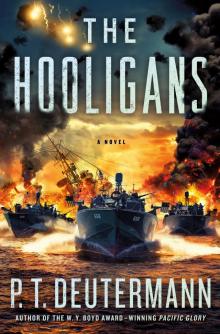 The Hooligans
The Hooligans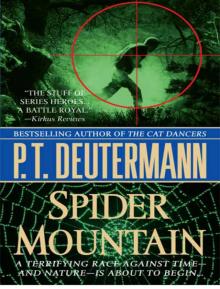 SPIDER MOUNTAIN
SPIDER MOUNTAIN![Cold Frame [retail] Read online](http://i1.bookreadfree.com/i/03/19/cold_frame_retail_preview.jpg) Cold Frame [retail]
Cold Frame [retail] Sweepers
Sweepers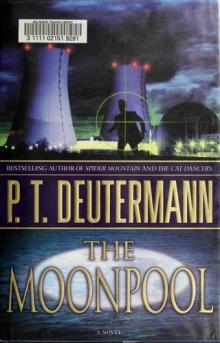 Cam - 03 - The Moonpool
Cam - 03 - The Moonpool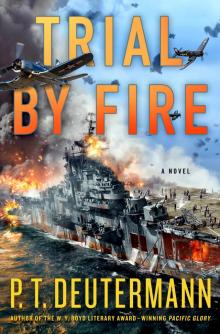 Trial by Fire
Trial by Fire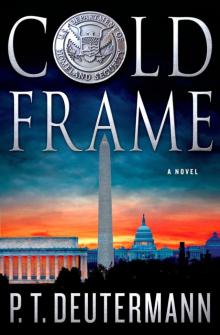 Cold Frame
Cold Frame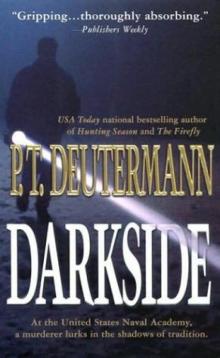 Darkside
Darkside Cam - 04 - Nightwalkers
Cam - 04 - Nightwalkers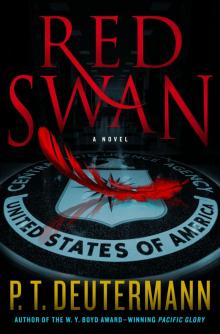 Red Swan
Red Swan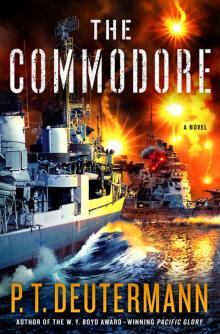 The Commodore
The Commodore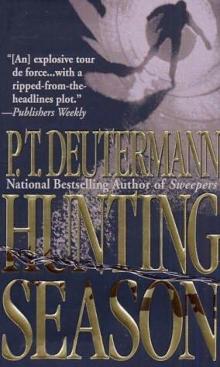 Hunting Season
Hunting Season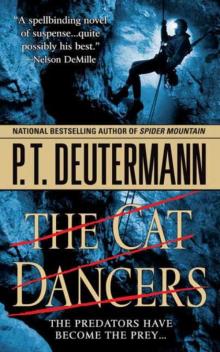 The Cat Dancers
The Cat Dancers Scorpion in the Sea
Scorpion in the Sea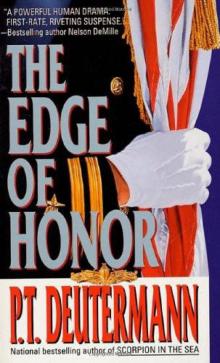 The Edge of Honor
The Edge of Honor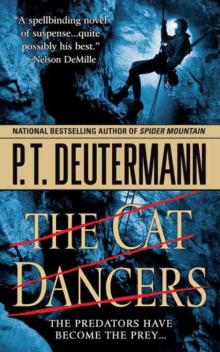 The Cat Dancers cr-1
The Cat Dancers cr-1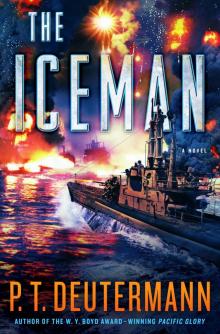 The Iceman
The Iceman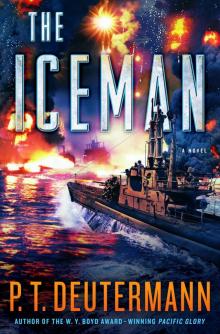 The Iceman_A Novel
The Iceman_A Novel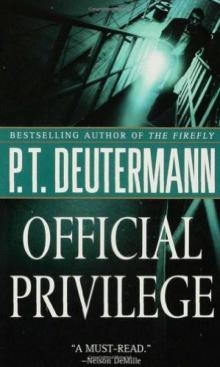 Official Privilege
Official Privilege Sentinels of Fire
Sentinels of Fire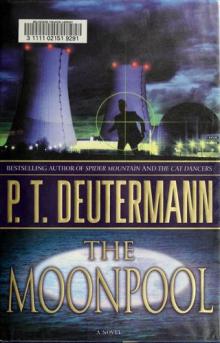 The Moonpool cr-3
The Moonpool cr-3 Nightwalkers cr-4
Nightwalkers cr-4 The Firefly
The Firefly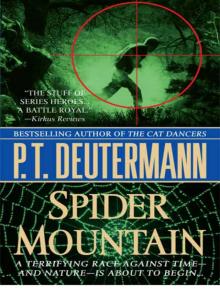 Spider mountain cr-2
Spider mountain cr-2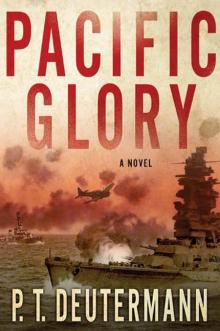 Pacific Glory
Pacific Glory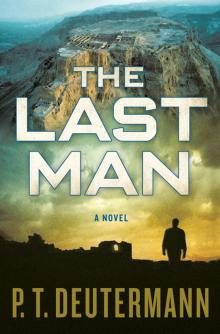 The Last Man
The Last Man